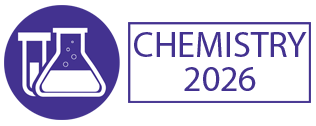Title : Interval cycling training and its effects on serum BDNF and neurochemical biomarkers of brain plasticity: A study for chemistry beyond borders, Barcelona 2026
Abstract:
Background: Physical exercise is increasingly recognised as a powerful modulator of neurochemical processes relevant to brain plasticity and metabolism. Among these, the neurotrophin Brain‑Derived Neurotrophic Factor (BDNF) plays a central role in synaptic adaptation, neuronal survival and cognitive function. Recent evidence also ties exercise-induced biochemical shifts to metabolic and chemical pathways of broader interest in chemistry and translational biomedicine.
Objective: This study aimed to evaluate the effects of an 8-week supervised interval cycling protocol on serum BDNF levels and selected neurochemical biomarkers (e.g., lactate, irisin) in a cohort of middle-aged adults. The goal is to link exercise physiology with chemical biomarkers of brain plasticity, fitting the “Chemistry Beyond Borders” theme of the conference.
Methods: Thirty sedentary adults (ages 50-65) recruited at Farhikhtegan Hospital, Tehran, were randomly assigned to an Exercise Group (n = 15) or Control Group (n = 15). The exercise group performed interval cycling on ergometers, three times per week for eight weeks: warm-up 10 min at 40% HRmax, followed by 4 × 4 min at 70% HRmax interspersed with 3 min at 50% HRmax, and 5 min cool-down. Biomarkers measured pre- and post-intervention included serum BDNF (pg/mL) via ELISA, plasma lactate (mmol/L), and serum irisin (ng/mL). Statistical analyses used paired and independent t-tests with significance at p < 0.05.
Results: The Exercise Group showed a +35% increase in serum BDNF (from 22.3 ± 3.2 to 30.1 ± 4.0 pg/mL, p < 0.001), a +28% increase in plasma lactate clearance capacity (baseline 2.4 ± 0.5 to 3.1 ± 0.6 mmol/L, p = 0.003), and a +20% increase in serum irisin (4.2 ± 0.8 to 5.1 ± 0.9 ng/mL, p = 0.005). The Control Group showed no significant changes.
Conclusion: Interval cycling produced significant enhancements in neurochemical biomarkers associated with brain plasticity and metabolism, highlighting a translational bridge between exercise physiology and chemical biology. These findings support inclusion of exercise-derived biochemical endpoints in multidisciplinary chemical/biomedical research and underscore the “Chemistry Beyond Borders” concept.
Keywords: interval cycling, BDNF, irisin, lactate clearance, neurochemical biomarkers, exercise physiology




